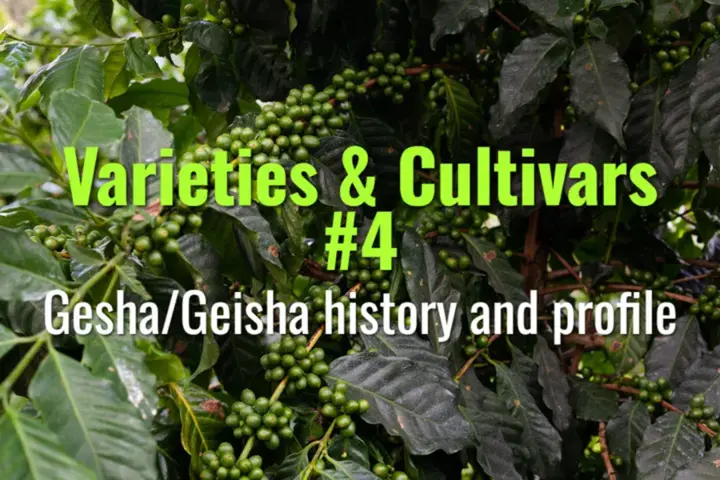Gesha/Geisha history and profile
This topic covers the history of the Gesha/Geisha variety, from its Ethiopian origins to its rediscovery in Panama, and explains why it has become one of the most celebrated and expensive coffees in the world.
- Coffee Basics Nerds
- 2 min read
Article 4 of 12 in Varieties & Cultivars/

Origins in Ethiopia
- Discovery: Gesha (often spelled Geisha) originates from the Gesha village in the forests of southwestern Ethiopia.
- Initial research: Collected in the 1930s and 1940s during expeditions searching for disease-resistant Arabica strains.
- Transfer: Seeds were sent to research stations in Tanzania and Costa Rica, valued for their resistance to coffee leaf rust.
Introduction to Panama
- 1960s: Gesha plants were introduced to Panama by way of Costa Rica.
- Early cultivation: Farmers initially overlooked it due to low yields and delicate branches.
- 2004 breakthrough: At the Best of Panama competition, a lot from Hacienda La Esmeralda stunned judges with its floral, jasmine-like aroma and tea-like profile, sparking global attention.
Flavor Profile
- Aroma: Intense floral (jasmine, bergamot, rose).
- Flavor notes: Citrus, tropical fruits, honey, black tea-like clarity.
- Acidity: Bright, complex, elegant.
- Body: Light to medium, tea-like.
- Cup reputation: Frequently scores 90+ points in specialty competitions.
Agricultural Traits
- Tree morphology: Tall, slender, delicate; lower productivity compared to other Arabicas.
- Weaknesses: Brittle branches, lower yields, high management needs.
- Altitude requirement: Performs best at high elevations (>1,600 m), where cool climates enhance quality.
Market and Cultural Impact
- Auction prices: Gesha lots from Panama have fetched record-breaking prices (hundreds to over $1,000 per pound).
- Symbol of excellence: Considered the “champagne of coffee,” showcasing the impact of terroir and meticulous processing.
- Global spread: Now cultivated in Colombia, Ethiopia, Costa Rica, and beyond, though quality depends heavily on environment.
Lasting Importance
- Gesha demonstrates how origin, environment, and genetics combine to create extraordinary coffee.
- It redefined specialty coffee pricing and consumer willingness to pay for flavor excellence.
- It remains a benchmark for quality, inspiring farmers to focus on varietal selection, terroir expression, and meticulous processing.